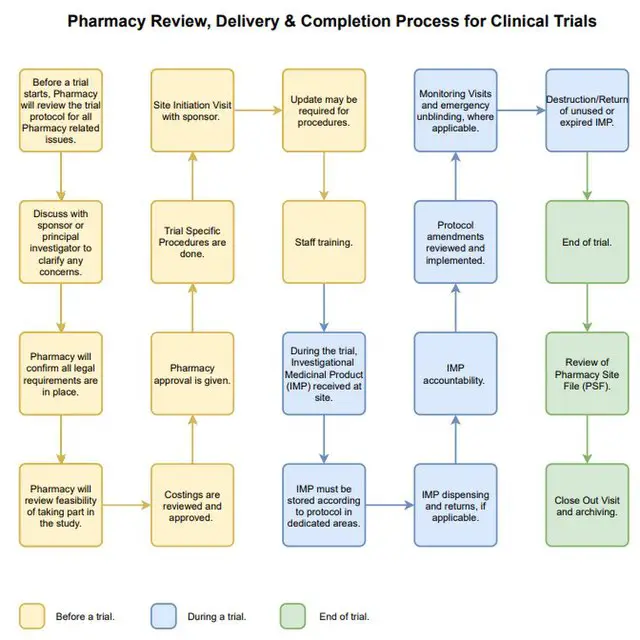Before starting the clinical trial process flow, we will understand, What is a definition of a clinical trial? what is a clinical trial in pharma?
What is a Clinical trial?
As per 21 CFR part 311.21 (B), phases of an investigation, Clinical trials are conducted for the purpose of producing scientific evidence and being able to make a decision about a drug’s proper use. Scientific studies that evaluate new treatments, cures, or prevent illnesses are called clinical trials. Additionally, clinical trials may be used to determine which medical treatments are most effective for certain illnesses or people.
What is a Definition of Clinical Trial?
Clinical trials are research studies that examine medical strategies, treatments, or devices in order to determine whether they are safe for human consumption or use.
What are FDA’S Clinical Trial Phases?
- Clinical research is divided into 4 different stages. 1. Preclinical Trial 2. Clinical Trial 3. Final Data Analysis 4. Follow up
Let’s understand the different stages.
Preclinical Trial:
Research scientists use human cell cultures and animal models to do preclinical research prior to conducting clinical trials. Laboratory tests may be conducted to verify a new medicine’s safety by testing it on a small sample of human cells.
Clinical Trial:
There are 4 phases of clinical trials. Each phase has different activities.
1. Clinical trial phase I:
Phase 1 studies usually involve patient or volunteer subjects and are closely monitored. Researchers carry out these studies to determine how the drug is metabolized and pharmacologically acted upon by the human body, to rule out adverse reactions from increasing doses, and to gather early signs of effectiveness.
To design well-controlled, scientifically valid Phase 2 studies, sufficient information regarding the pharmacokinetics and pharmacological effects of a drug should be acquired during Phase 1.
An experimental drug, vaccine, or device is tested in Phase I trials in a small group of individuals for safety and dosage.
In phase, I trial was conducted on less number of people around 15-20. The study is conducted for a period of several months.
2. Clinical trial phase II:
A Phase II trial involves more people than a Phase I trial, and it is designed to determine whether an experimental treatment is safe, and effective and its side effects.
The phase II trial was conducted on people, around 100 numbers. The study is conducted for a period of months to 2 yrs.
3. Clinical trial phase III:
Trials in Phase III are usually large and involve a lot of participants. During this phase, a standardized treatment or placebo is used to test the safety and efficacy of the experimental drug or vaccine. It is possible to identify side effects during Phase III trials that were not observed during Phase II studies since they are evaluating a greater number of participants. To decide whether to approve a new drug or vaccine, the FDA will take into account the results of clinical trials through Phase III.
The phase III trial was conducted on people, around 300-3000 numbers. The study is conducted for a period of 1 yr to 4 yrs to monitor the adverse reaction of the drug.
4. Clinical trial phase IV:
Clinical trials in phase IV of a drug or vaccine are conducted after regulatory health authorities, such as the US Food and Drug Administration, have approved its use. Large, diverse populations are monitored for a drug’s safety and effectiveness.
The phase IV trial was conducted on several thousand people. The study is conducted period may vary.
What is a clinical trial process flow?
As we have seen many activities are involved in the clinical trial process flow such as;
- Preclinical trial
- Clinical trial
- Final data analysis
- Follow up

You May be Interested:
- HPLC Interview Question and Answers
- Gas Chromatography Interview questions and answers
- Karl Fischer Titration Interview Question and Answer
- Dissolution Interview Question and Answer
- What Is Change Control In pharma?
- CAPA Process in Pharmaceutical Management System
- FAQ’s On FDA’s Data Integrity
For the interview, preparation refer
YT channel: Pharmabeej